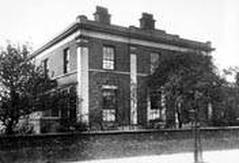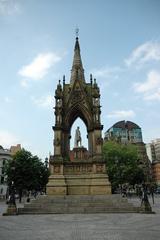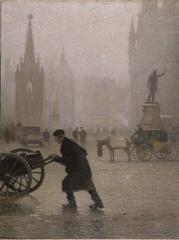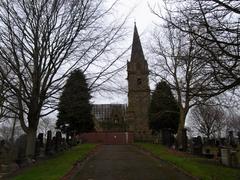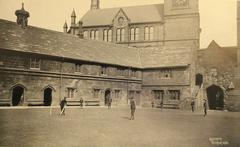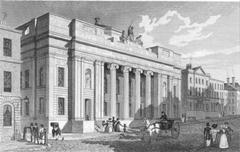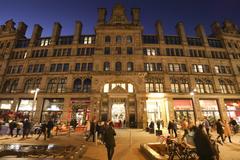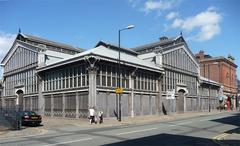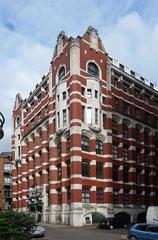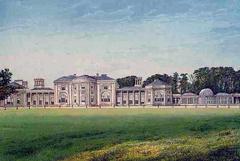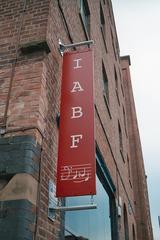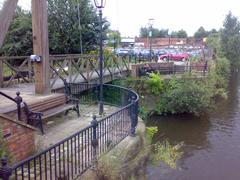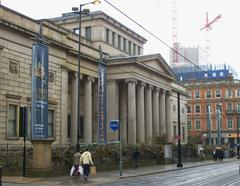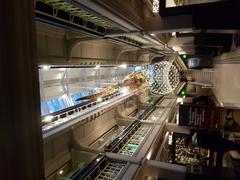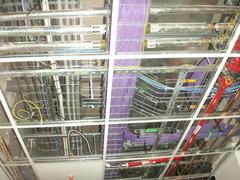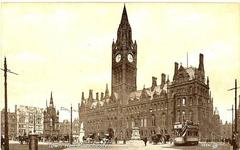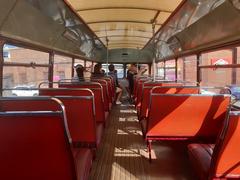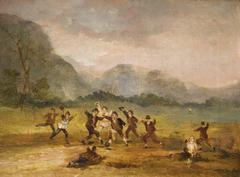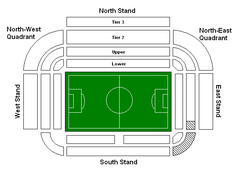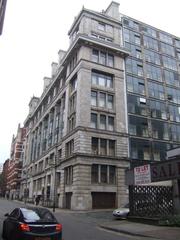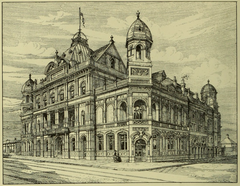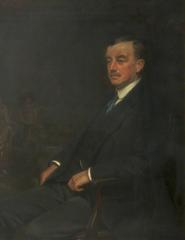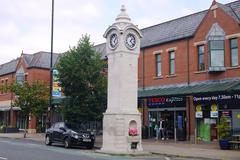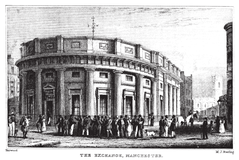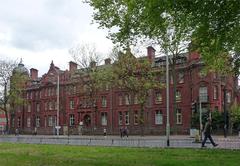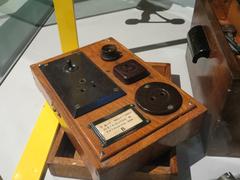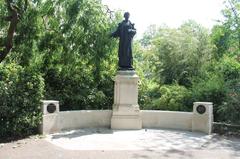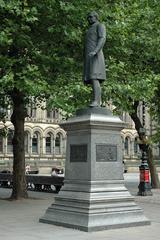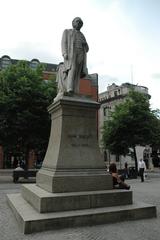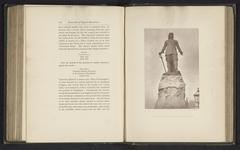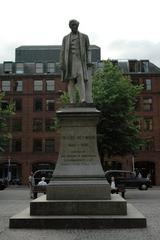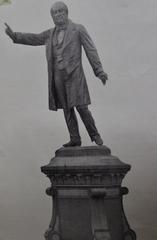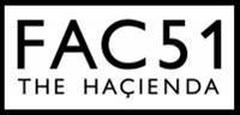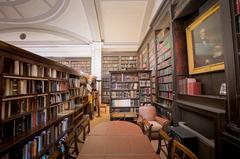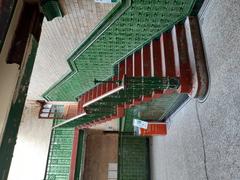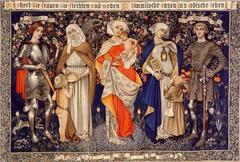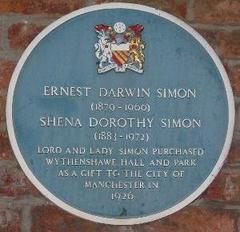
Mamucium Visiting Hours, Tickets, and Historical Site Guide in Manchester
Date: 04/07/2025
Introduction to Mamucium and Its Significance in Manchester
Located in Manchester’s historic Castlefield district, Mamucium is an ancient Roman fort that offers a fascinating insight into the city’s early foundations nearly 2,000 years ago. Established around AD 78–79 under the leadership of General Agricola, Mamucium was strategically positioned atop a sandstone outcrop at the juncture of the Rivers Irwell and Medlock. This vantage point provided military oversight of key Roman roads linking settlements such as York, Chester, and Ribchester, highlighting Mamucium’s crucial role in Roman Britain (BBC Manchester; Manchester Evening News).
Today, Mamucium is a Scheduled Ancient Monument within the Castlefield Urban Heritage Park. Visitors can explore reconstructed fortifications, defensive walls, and the adjacent vicus—a civilian settlement that once housed merchants, craftsmen, and soldiers’ families. The site provides a rich blend of Roman military architecture and social history, revealing how Roman and local Celtic cultures merged (Tripomatic; Britain All Over).
Mamucium is open year-round during daylight hours and features interpretive signage, occasional guided tours, and proximity to attractions like the Museum of Science and Industry and the Bridgewater Canal. This guide details visiting hours, ticketing, accessibility, and surrounding amenities for a rewarding visit to Manchester’s Roman heritage (Adventure Clues; Manchester City Council).
Table of Contents
- Discover Mamucium: Manchester’s Ancient Roman Fort
- Origins and Strategic Importance
- Construction and Development Phases
- Social and Cultural Life
- Archaeological Discoveries and Preservation
- Visitor Information: Hours, Tickets, and Tips
- What to See at Mamucium
- Guided Tours and Educational Opportunities
- Facilities and Amenities
- Accessibility and Inclusivity
- Nearby Attractions
- Sustainability and Responsible Tourism
- Visitor Etiquette
- Frequently Asked Questions (FAQ)
- Conclusion and Further Engagement
- References and Further Reading
Discover Mamucium: Manchester’s Ancient Roman Fort
Mamucium stands as one of Manchester’s most significant historical sites. It draws visitors with its preserved ruins, reconstructed fortifications, and extensive archaeological heritage. Whether you are curious about Roman military history, ancient architecture, or simply seeking a top cultural attraction, Mamucium is a must-visit destination.
Origins and Strategic Importance
Founded around AD 78–79, Mamucium (or Mancunium) was built under General Agricola’s governorship (BBC Manchester; Manchester Evening News). The fort’s location—on a naturally defensive sandstone outcrop—allowed surveillance of major Roman roads and rivers, ensuring control over northwestern Britain.
The name “Mamucium” is believed to derive from the Celtic word for “breast-shaped hill” (mamm), reflecting the landscape, combined with the Latin “castra” (camp). This origin also links to the modern demonym “Mancunian.”
Construction and Development Phases
Initial Timber Fort
The earliest phase of Mamucium was a timber construction with earthen ramparts, built to house an auxiliary cohort of approximately 500 infantry soldiers. Facilities included defensive ditches, wooden palisades, barracks, a headquarters (principia), and storage buildings.
Expansion and Stone Reconstruction
By around AD 160, the fort expanded with new granaries, reinforcing its logistical role. Around AD 200, under Emperor Septimius Severus, Mamucium was rebuilt in stone with new walls and gatehouses, signaling its lasting strategic value (BBC Manchester).
Civilian Settlement (Vicus)
A vibrant vicus grew alongside the fort, supporting 500–1,000 inhabitants: soldiers’ families, merchants, and craftsmen (Manchester Evening News). This civilian community featured homes, workshops, markets, and public buildings.
Social and Cultural Life
Mamucium’s population was diverse, with garrisons from Spain, Raetia, and Noricum (BBC Manchester). Religious life included a Roman temple, altars, and evidence of Mithraic worship—reflecting a blend of Roman and local traditions.
Archaeological Discoveries and Preservation
Archaeological work has revealed fort walls, gatehouses, granaries, and vicus structures. Mamucium’s remains are preserved within Castlefield Urban Heritage Park, where visitors find reconstructed walls and interpretive signage that bring Manchester’s Roman past to life (Tripomatic).
Visitor Information: Hours, Tickets, and Tips
- Location: Castlefield, at the end of Deansgate and down Liverpool Road, opposite the Museum of Science and Industry (Tripomatic).
- Opening Hours: Open daily from dawn to dusk, year-round.
- Admission: Free; no tickets required.
- Guided Tours: Offered occasionally by heritage organizations (check local listings).
- Accessibility: Wheelchair-accessible paths and benches; mostly level terrain.
- Parking and Transport: Paid parking nearby; accessible via Manchester’s Metrolink at Deansgate-Castlefield.
- Best Time to Visit: Spring and summer provide pleasant weather and extended daylight.
What to See at Mamucium
- Roman Fort Remains: Explore reconstructed walls, gatehouses, and granaries, all based on archaeological evidence (Touristlink; Manchester Magazine).
- Vicus and Civilian Settlement: Discover the remains of the civilian settlement supporting daily life around the fort (Wikipedia).
- Artefacts and Interpretation: View artifacts at the Museum of Science and Industry (MOSI), and read on-site panels illustrating Roman life.
Guided Tours and Educational Opportunities
Local tour operators and heritage organizations offer scheduled guided walking tours of Mamucium and Castlefield, focusing on Roman history and archaeology (Adventure Clues). School visits and educational resources are available through MOSI and local groups.
Facilities and Amenities
- On-Site: Open grounds with benches and grassy areas; no toilets, cafés, or shops directly on-site.
- Nearby: Public toilets at MOSI and local pubs; dining at Mamucium Restaurant & Cocktail Bar (Mamucium Restaurant), and accommodations at Hotel Indigo (Creative Tourist).
Accessibility and Inclusivity
Mamucium is accessible to wheelchair users and families with strollers, though some uneven surfaces exist (Adventure Clues). Assistance dogs are welcome; accessible toilets are nearby.
Nearby Attractions
- Museum of Science and Industry (MOSI): Features exhibits on Manchester’s industrial and Roman history (Manchester Magazine).
- Bridgewater Canal and Castlefield Bowl: Walking, boating, and events.
- Manchester Cathedral, AO Arena, Northern Quarter: Cultural and entertainment venues.
Sustainability and Responsible Tourism
Mamucium and its partners promote sustainability—Mamucium Restaurant prioritizes local sourcing (Mamucium Restaurant). Visitors are encouraged to respect the ruins, avoid littering, and support local businesses.
Visitor Etiquette
- Do not climb or damage archaeological remains.
- Dispose of litter properly.
- Be considerate of other visitors and wildlife.
Frequently Asked Questions (FAQ)
Q: Is there an admission fee or ticket required?
A: No, Mamucium is free to visit.
Q: What are the opening hours?
A: Open year-round from dawn to dusk.
Q: Is the site accessible?
A: Yes, most paths are accessible, though some uneven surfaces exist.
Q: Are guided tours available?
A: Yes, local groups offer scheduled tours; check ahead.
Q: Are there facilities on-site?
A: Toilets and cafés are located nearby, not at the site itself.
Conclusion: Experience Manchester’s Roman Heritage at Mamucium
Mamucium offers a unique opportunity to step back into Manchester’s Roman origins. With its preserved ruins, reconstructed features, and accessible green spaces, Mamucium is ideal for families, history enthusiasts, and travelers alike. Plan your visit to explore the fort, discover the stories of Manchester’s earliest days, and enjoy the surrounding attractions.
Download the Audiala app for the latest guides and audio tours, and check local heritage organizations for event updates to enhance your visit.
References and Further Reading on Mamucium
- Discover Mamucium: Manchester’s Ancient Roman Fort (2008), BBC Manchester (BBC Manchester)
- Castlefield Fort: Roman Manchester Mamucium (2020), Manchester Evening News (Manchester Evening News)
- Mamucium Roman Fort and Vicus (2015), Lancashire Past (Lancashire Past)
- Mamucium Roman Ruins at Castlefield (2025), Adventure Clues (Adventure Clues)
- Mamucium Roman Gardens (2023), Britain All Over (Britain All Over)
- Visiting Mamucium: Manchester’s Historic Roman Fort (2023), Britain All Over (Britain All Over)
- Mamucium Urban Heritage Park, Tripomatic (Tripomatic)
- Manchester City Council Castlefield Conservation Area (Manchester City Council)
- What’s New for 2025 in Manchester (2025), Visit Manchester (Visit Manchester)






